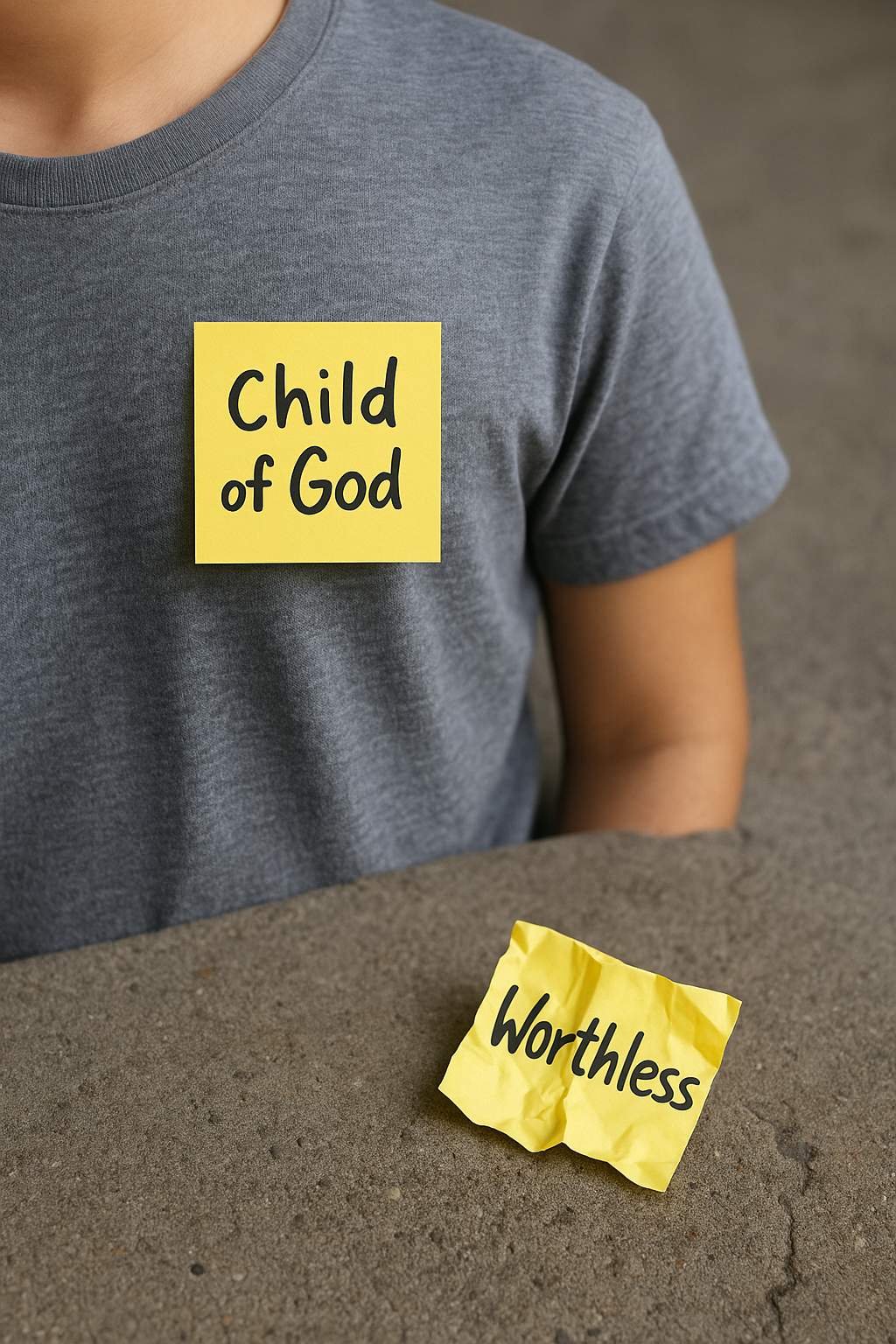
10 Youth Group Games You Can Play with Just a Kickball
Everyone loves games. Games can start connections with your group. As youth pastors, we want to make the time to

Teenagers are sorting through identity all the time, even if they don’t call it that. They’re trying to figure out who they are, how they matter, and where they belong. And the world is more than ready to answer with its own definitions of identity:
Unfortunately, all of those voices can leave a young person confused or feeling inadequate. In fact, a leaked Facebook study revealed that one in three teen girls felt worse about their bodies after using Instagram — a stark reminder of how social media can amplify insecurity and false identity. But what does God say?
As youth pastors, one of the most important things we can teach is that identity isn’t something we work for – it’s something we receive in Christ. When a student truly believes that, it changes everything. It lifts the pressure. It gives them rest. Gospel belief anchors them. So how do we teach this in a way that sticks with them longterm?
Time needed: 1 hour
(15 min prep + 45 min teaching and discussion)
Materials Needed: Bibles, sticky notes (two per student), pens or markers, (optional:) mirror or name tag stickers for reflection exercises
Begin by surfacing the labels students may already be wearing. These could be names others have given them—like “lazy,” “awkward,” “bad kid”—or lies they’ve internalized: “I’m a failure,” “I’m invisible,” “I’ll never be enough.”
Ask: What’s a label you’ve worn that you didn’t choose for yourself? Give space for honesty.
Then introduce John 1:12: “Yet to all who did receive him, to those who believed in his name, he gave the right to become children of God.”
This is the foundational identity shift: when students put their faith in Jesus, they aren’t just people who go to church. They become family. “Child of God” isn’t just a spiritual phrase—it’s a new core identity that overrides every other name they’ve been given.
Pro Tip: Use name tags or sticky notes and invite students to write down labels they’ve been given. Then read John 1:12 and ask which label needs to be replaced by “Child of God.”
Once students understand their new identity, they still need help separating their behavior from their core worth. Shame tells them: “You’re the problem.” The gospel says: “Your sin was the problem, and Christ dealt with it.”
Use 1 John 1:9: “If we confess our sins, he is faithful and just and will forgive us… and purify us.”
Invite students to think of a time they messed up—something they’re still carrying. Then ask: Do you believe God forgave you? Do you believe He made you clean?
Many students feel forgiven in the moment but continue to wear shame like a name tag. Emphasize: forgiveness is not just a transaction—it’s a new condition. They are clean. They are not what they did.
Pro Tip: Don’t rush this section. After reading 1 John 1:9, allow time for students to write or draw something symbolic that represents what God has already removed from them.
Some students aren’t struggling with guilt over sin—they’re struggling with wounds from life. Bullying. Divorce. Abuse. Betrayal. These are identity-shaping experiences too.
Read Isaiah 53:5: “…by his wounds we are healed.”
Help them realize: healing isn’t about forgetting what happened—it’s about God re-defining what it means about them.
Ask: What wound are you still trying to heal from on your own?
This moment may feel heavy. Let it. Acknowledge that pain is a real part of their story—but not the final word.
Pro Tip: After a moment of silent reflection, read Isaiah 53:5 again slowly, and have students repeat the final phrase together: “We are healed.”
It’s easy to believe identity truths in theory. The harder part is living like they’re true. For students stuck in cycles of sin, insecurity, or comparison, they need to hear this: Romans 6:6–7 says:
“We are no longer slaves to sin… because anyone who has died has been set free.”
In Christ, their past doesn’t own them. Their addiction doesn’t define them. Their story isn’t over.
Ask: If you truly believed you were free, how would that change your choices this week?
Freedom is not about perfection—it’s about power. You can walk away from what used to control you, not because you’re strong, but because Christ has freed you.
Pro Tip: Draw a simple diagram on a whiteboard: a prison cell with an open door. Ask students, “If the door’s already open, what’s stopping you from walking out?”
This activity is a physical reflection of the truth you’ve been unpacking. Distribute two sticky notes to each student. On the first, they write a false label they’ve carried (e.g., “Failure,” “Ugly,” “Too much”). On the second, they write a new gospel-centered identity they want to wear (e.g., “Forgiven,” “Healed,” “Child of God,” “Free”).
Have them place the first label on their chest for a moment of reflection. Then, invite them to remove it, crumble it, and replace it with their new identity label. After a few students share, remind them: they don’t wear the new name because they feel it. They wear it because Christ gave it.
Pro Tip: Close the night by inviting students to keep their second label somewhere visible for a week—on their phone, mirror, or water bottle—as a reminder of what’s true.
Want the full four-week series that inspired this lesson?
Get the Hello My Name Is series—complete with Message Manuscripts, Video Messages, Discussion Guides, and Graphics.
Related Posts:
Best Curriculum for Youth Pastors
How to Teach Teenagers About Spiritual Habits

Everyone loves games. Games can start connections with your group. As youth pastors, we want to make the time to

Most of us don’t get into youth ministry for the overwhelmingly generous paycheck. We love Jesus, we love the next

The Trinity is one of the most foundational doctrines in Christianity—and one of the most confusing. How can God be